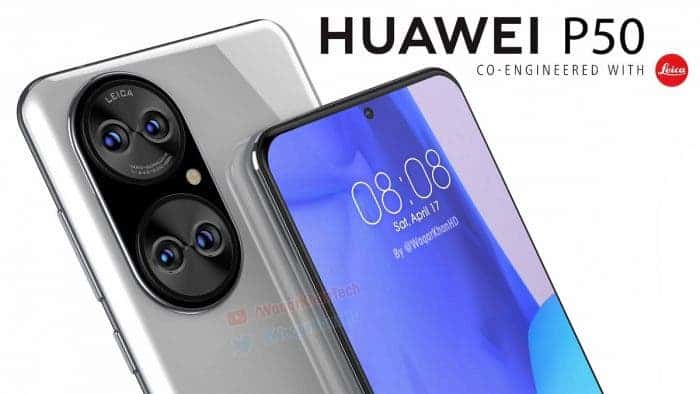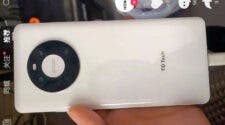Following the gorgeous images of the Huawei P50 Pro, which appeared last week, more realistic renders of the new product have appeared on the web. They correspond to the leaked schematics of the base Huawei P50, illustrating a large camera block combining a pair of circles with inscribed lenses.
The front panel is a screen with thin bezels (excluding the bottom) and a selfie camera hole in the center. The creator of the video suggests four possible colors: black, white, green and beige. Recall that the Huawei P50 is expected to have an advanced Sony IMX800 liquid lens sensor; in addition to the Kirin 9000 chipset and HarmonyOS out of the box. The presentation should take place before the end of the second quarter (May-June).
Huawei P50 postponed again
Huawei P50 was already significantly delayed: first it was expected in February-March, then in April. Well, now the leading source of leaks on Huawei, @RODENT950, says that the presentation of the flagship series will take place in May-June. Thus, the total release delay could be three months; and the international release remains in doubt due to extremely low stocks of components; including the Kirin 9000 and Sony camera sensors for the Lecia block. Huawei speaks with journalists less and less, so, alas, no one knows exactly about its plans.
At the beginning of March, it became known that the Huawei P50 family of smartphones may become the first products of the company running out of the box on its own operating system, Harmony OS. Sources pointed to the debut in mid-April; but new reports from the Chinese media indicate a possible postponement of the launch to May. The report suggests that the most likely reason for this may be Huawei’s desire to polish the new OS. The lineup has also been confirmed once again; which will include the base P50, the improved P50 Pro and the top-end P50 Pro +. In addition to the transition to Harmony OS, the smartphones are credited with the latest Sony IMX800 sensor, the Kirin 9000L chipset for the standard variant (with reduced performance relative to the Kirin 9000) and a very specific design of the camera unit.














